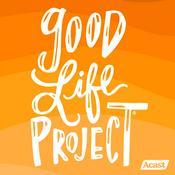353 episodes

Revisited: Is Honda’s K-Series Really the Greatest 4-Cylinder Ever Made?
31/12/2025 | 2h 16 mins.
*** We’ll be taking a break over the Christmas/New Year period and will be back in action mid-January.That means that although there won’t be any new episodes for a few weeks, we’ll be taking another look back at some of our favourite episodes. ***Few people know more about ultra-high-performance engine building than this week’s guest, Terry Radbourne of Bourne HPP. In this episode, we’re going to be discussing topics like creating engines for LMP1 and Mercedes’ F1 team, truly getting the absolute most out of Honda’s K series motor, as well as the odd controversial opinion that’s sure to get the comment section fired up.👉 Use the code ‘PODCAST500’ to get $500 OFF HPA's VIP Package: https://hpcdmy.co/podvipTerry brings an intriguing mix of expertise and insider knowledge — straight out of school, he found himself working for Advanced Engine Research and quickly became involved in some seriously high-end race engine design and building work. After a few years spent honing his craft — including a stint creating engines for the Mercedes Formula 1 team, Terry went on to found his own company, Bourne High Performance Powertrains, or Bourne HPP for short.Bourne HPP specialises in designing and building seriously aggressive motors — most commonly of the Honda K-series variety in both naturally aspirated and turbocharged forms. This allows us to dive very deep into the intricacies of four-cylinder engine building, and time is spent discussing intake port design, cylinder sleeves, compression ratio, and a whole lot more.We also get stuck into the K-series motor itself, and Terry spends time talking us through exactly why he thinks this is one of the best engines ever produced and how to get the most out of it. As Bourne HPP is something of a one-stop-shop that does everything from engine rebuilds, to NA and turbocharged crate engine packages, to dyno tuning with the use of Syvecs and Lyfe Racing ECUs, Terry has an absolute oversupply of knowledge that he’s (mostly) willing to share.If you want to get smarter, this episode with Terry Radbourne of Bourne HPP is not to be missed.👉 Use the code ‘PODCAST500’ to get $500 OFF HPA's VIP Package: https://hpcdmy.co/podvipAs mentioned in the podcast, you can listen to our episode featuring Syvec’s Ryan Griffiths here: https://hpcdmy.co/SyvecsFollow Bourne HPP here:IG: @bourne_hppFB: Bourne HPPWWW: bournehpp.com

153: A High School Project Gone Wild: 1,450HP IndyCar x Firebird
17/12/2025 | 1h 54 mins.
What would happen if you took an IndyCar inspired chassis, dropped a 1973 Pontiac Firebird body over the top of it, and then added a 1,450hp twin-turbo LS? That’s essentially what Cavan Cameron and his father, Russell Cameron, of Horizon Motorsport have built.The project began as Cavan’s high school engineering project but has since evolved into one of the coolest and most ambitious builds we’ve seen in a while.👉 Use the code ‘PODCAST500’ to get $500 OFF HPA's VIP Package: https://hpcdmy.co/podvipIn this episode of Tuned In, Cavan shares his journey from a childhood passion for cars to pursuing a career in motorsports engineering, sparked by his father’s involvement in IndyCar.We dive into the “Hammerhead” build that Cavan and his dad have been developing, exploring the challenges of integrating genuine IndyCar components into a bespoke project. He breaks down the technical aspects of the tube-frame chassis, from fabrication and material choices to the complexities of suspension dynamics.We cover the finer details of designing and developing a competitive race car, with a focus on suspension, engine configuration, and aerodynamics. The conversation also touches on the challenges faced during its first outing at World Time Attack Challenge, including managing torque through the transaxle and tuning the car for optimal performance.This build is truly something special, and what Cavan has achieved is seriously impressive. We can’t wait to see how the car evolves as they continue to refine and dial it in.👉 Use the code ‘PODCAST500’ to get $500 OFF HPA's VIP Package: https://hpcdmy.co/podvipFollow Cavan here:Instagram: horizon_motorsports_llcYoutube: horizon_motorsports_llcTimestamps:0:00 A High School Project Gone Wild: 1,450HP IndyCar x Firebird4:12 How did you become interested in cars?5:21 What was your Dads involvement in Indy Car?10:26 How’s the exposure to high level motorsport at a young age shaped your career?11:53 Is it easier or harder to design parts with a tight set of rules?16:10 Designing fit for purpose parts18:58 Tell us about your motorsport degree 29:54 What is the Hammerhead and how did this project come about?33:33 Did you design the car fully in CAD before starting?39:27 How did you learn your fabrication skills?42:56 How do you juggle getting the car done and completing it to a standard you’re proud of?45:15 What material is the chassis made from?50:58 How did you weld the chassis and get it square and straight?55:11 How does changing the roll centre affect the car's handling?59:01 Are the IndyCar spec’d fasteners adequate for the extra weight of your build?1:01:30 How about the components like uprights and wishbones? 1:06:39 Spring rates and dampers, how did you spec these?1:15:29 Did you ever consider putting a Cosworth XD engine in the car?1:18:07 Was it ever a concern that the LS was going to have too much torque for the trans axel?1:27:27 You’re not running any intercooler on this car?1:32:54 How did you develop the aero package?1:43:38 What’s left to develop on the car and when will we see it back on track?1:46:41 Final 3 questions

152: Building a Lamborghini Gallardo into a WTAC Weapon
03/12/2025 | 1h 45 mins.
There’s no arguing the Lamborghini Gallardo GT3 is no slouch. But the World Time Attack Challenge is a whole different league, and in standard form this factory race car is basically like bringing a knife to a gunfight. To run with the world’s best, it needed serious development—and that’s exactly what Josh and his team at Specialised Racing Solutions delivered, bagging P2 in Pro class on the car’s debut outing.👉 Use the code ‘PODCAST500’ to get $500 OFF HPA's VIP Package: https://hpcdmy.co/podvipIn this episode of Tuned In, Josh Gardner breaks down his path from car-mad kid to professional mechanic and business owner. He gets into the hard parts of starting a workshop, and why custom builds are never as simple as they look from the outside.Josh also reflects on the lessons learned from running a business, His work on the Nissan GTR platform and his return to the sharp end of the automotive world with the Lamborghini Gallardo GT3 build—including what it really takes to compete at the highest level at WTAC.We dive into the nuts and bolts of performance development: turbo selection, installation, and the cooling challenges that come with high-output builds. The conversation also explores advanced engine management systems like MoTeC, the realities of CAN bus integration, and where technology is headed with the use of CAD, 3D scanning and 3D printing in modern performance builds.Josh is packed with knowledge, and his story—from backyard tuning as a teenager on the family PC to building time attack cars capable of taking on the world’s best—makes for a seriously compelling listen.👉 Use the code ‘PODCAST500’ to get $500 OFF HPA's VIP Package: https://hpcdmy.co/podvipFollow Josh here:Instagram: specialisedracingsolutionsWWW: srs.racingTimestamps:0:00 Building a Lamborghini Gallardo into a WTAC Weapon3:33 How did you develop a passion for cars?9:34 How did you develop your tuning skills at such a young age?13:44 How hard was it starting your own shop?16:17 How did you develop your skills on the GTR platform?18:02 What skills did you have when you started the business?30:50 How did you get back into the hands on automotive scene?32:06 Overview of the current business38:29 What was the drive to attend World Time Attack?39:55 Why did you choose the Lamborghini Gallardo? 42:46 How much of an advantage has it been starting with a GT3 car?43:59 What are the Pro Class rule limitations at WTAC?50:59 What is the engine package on the Lamborghini?55:16 What are you doing for the intercooler/intake setup?57:11 How are the turbos set up on the car?1:03:42 What suspension modifications have you done to deal with the increase in downforce?1:06:04 What is the electronics package you’re using?1:14:31 What changes are you going to make for next year's WTAC?1:17:00 Nissan GTR GT3 car1:18:47 If we compare the Nissan and the Lamborghini what are the differences?1:20:06 Are you using any technology to develop these cars? CAD, 3D scanning, 3D printing?1:26:48 How much improvement will you get from moving the GTR engine back and down?1:28:52 Is the GTR almost ready for WTAC?1:29:46 What do we need to leverage 3D scanning and 3D printing technology?1:35:02 Final 3 questions

151: CBR1000 x Miata - A Match Made in Heaven?
19/11/2025 | 1h 18 mins.
Many car enthusiasts have fantasised about a lightweight car with a motorcycle engine swap. After all, what’s not to like about a high-revving, lightweight engine that produces great power and sounds incredible, right?Reed Stormzand from the YouTube channel Reed Make Car tells us that while the combo can be awesome, it definitely hasn’t been all plain sailing.👉 Use the code ‘PODCAST500’ to get $500 OFF HPA's VIP Package: https://hpcdmy.co/podvipIn this episode of Tuned In, Reed shares his journey into the automotive world, detailing his self-taught welding and fabrication skills as well as his day job at ZZ Performance.We discuss his Cadillac ATS-V drag car, ZZ Performance’s involvement in pushing the platform forward, and their pursuit of the ¼-mile world record.We also cover his CBR1000-swapped Miata, which started out naturally aspirated but is now turbocharged. Reed talks about the challenges of the swap, the intricacies of using a motorcycle engine in a car, and how he learned to tune—first on the stock Miata engine and now on the CBR1000 setup.Reed never set out to become a YouTube car builder, but he’s built a solid following, and viewers clearly love his projects. His self-taught background, hard work, and willingness to learn by doing stand out as key takeaways. If you want to learn something, just start doing it.👉 Use the code ‘PODCAST500’ to get $500 OFF HPA's VIP Package: https://hpcdmy.co/podvipFollow Reed here: Youtube: @ReedMakeCarTimestamps:0:00 Intro3:35 How did you develop an interest in cars?6:21 Can you talk to us about pulse TIG welding?7:30 What does your day to day look like at ZZ performance look like?11:21 Cadillac ATSV platform and chasing 1/4 mile world record.22:03 Are there any limitations with HP tuners that are holding you back?23:17 What boost are you running and how much power does the car make?25:05 Do you set up your suspension and alignment for when the car is squatting?28:39 How did the Miata with a motorcycle engine project come about?31:18 Was there ever any other engines considered from the automotive world?33:08 Is the gearbox strong enough and what are the challenges of running it in a car? 37:32 Is a motorcycle engine swap more complex?40:24 What have you done with wiring and engine management?43:16 Have you fitted a bigger set of injectors for fueling?44:58 How are you controlling timing with the piggyback computer?45:46 How much power did the bike engine make N/A and turbocharged? 46:29 Where are the limits of this engine's internal components?46:48 Clutch and gear shifting49:39 How do you go about tuning this platform when you don’t know the engine's limitations?52:38 How is the driving experience with the motorbike engine compared to stock?53:29 What’s the next step? FA20 BRZ56:19 Let's wrap up the Miata, Are you doing the tuning?58:35 Tell us a little bit more about your plans for the BRZ build?1:06:56 Final 3 questions

150: The Self-Taught Way: Building Wild Engines from Scratch
05/11/2025 | 1h 56 mins.
Imagine being a self-taught engineer who mastered the intricacies of engine design and is now building bespoke engines from the ground up. That’s exactly what Josh Valman from Motorsport_Engineering has done.We welcome Josh back for his second appearance on the podcast. This time, we catch up on his wild Alpha V8 Hayabusa project and dive into his latest creation — a turbocharged hot-vee V6 bespoke engine.👉 Use the code ‘PODCAST500’ to get $500 OFF HPA's VIP Package: https://hpcdmy.co/podvipIn this episode of Tuned In, Josh shares his journey from self-taught engineer to bespoke engine designer and builder. We check in on his progress with the Alpha project before unpacking the details of his new V6 design.We explore the technical side of engine performance — including pre-ignition chambers, variable valve timing, and the unique benefits of a V6 engine configuration. Josh also discusses the finer points of engine design and the importance of balancing stroke and bore ratios while selecting the right compression ratios for boosted engines.With deep expertise in machining and manufacturing, Josh offers valuable insights into precision machining, materials selection, heat treatment, and maintaining tight tolerances in high-performance engine parts.If you’re fascinated by engine design, engine building, machining, or CAD, this episode is packed with knowledge. Josh’s passion for sharing his experience makes it a must-listen for anyone interested in the art and science of building engines.👉 Use the code ‘PODCAST500’ to get $500 OFF HPA's VIP Package: https://hpcdmy.co/podvipFollow Josh here:Instagram: Motorsport_engineeringYoutube: Motorsport_engineeringTimestamps:0:00 The Self-Taught Way: Building Wild Engines from Scratch3:34 Welcome back, Who are you? Where are you from and what do you do?8:45 How did you learn your CAD skills?2:11 What’s the complexities with manufacturing in China?18:31 What’s happening with the Alpha project?21:31 What is the process for making the tooling for carbon fibre body panels?23:20 When do you see this competing in the British Hillclimb Championship?23:46 What engine changes would you make to run the car at Pikes Peak?27:05 What is a pre-ignition chamber and what’s the advantage?34:40 What is pre-ignition and what causes it?38:04 What’s the advantage of variable valve timing?40:26 How did you go from a manufacturi45:49 How do you choose the V angle for an engine?51:17 How do you design parts & get them right without years of experience? 55:25 Why would a V6 require balance shafts?58:27 Is it easier to design an engine from scratch than modify an existing one?1:04:12 What are the factors that affect deciding on a stroke length? 1:06:36 How critical is the rod to stroke ratio?1:07:55 How do you choose a compression ratio?1:11:05 How do you confirm the strength of your engine parts?1:13:53 Why do we need to heat treat our parts? 1:17:11 How do you keep accurate tolerances while machining these parts?1:21:09 Why are you using a liner over a coated bore?1:22:31 How hard is it machining coolant passages into the block & Head?1:25:45 How are you confirming you have sufficient cooling when designing these engines?1:30:40 How are you sealing the head on this engine?1:34:12 How did the V8 engine go when you got it on the dyno?1:35:53 Why did you go gear drive between the crank and cams?1:40:09 How long between over
More Education podcasts
Trending Education podcasts
About Tuned In
Listen to Tuned In, Begin Again with Davina McCall and many other podcasts from around the world with the radio.net app

Get the free radio.net app
- Stations and podcasts to bookmark
- Stream via Wi-Fi or Bluetooth
- Supports Carplay & Android Auto
- Many other app features
Get the free radio.net app
- Stations and podcasts to bookmark
- Stream via Wi-Fi or Bluetooth
- Supports Carplay & Android Auto
- Many other app features


Tuned In
download the app,
start listening.





































